Fire It Up
Welcome to the first week of Core Set 2020 preview season. I'm going to talk about the new set, show off some new cards, and discuss some of Play Design's new philosophies with Standard and Limited moving forward.
F.I.R.E.-ing it up
As Dave Humphreys discussed in his War of the Spark Set Design article, Aaron Forsythe delivered an impassioned speech to the R&D squad about things we should work further on to generate excitement with our cards. This led to the refinement of our core goals of R&D, and the generation of F.I.R.E. "Fire" is an acronym that holds the tenants of our new philosophy. It translates differently for the Initial Design, Play Design, and Creative teams. Here is what it means to me, as a play designer.
F Is for Fun – Above all else, our game should be fun to play. For Play Design, fun is about interesting decisions, diverse gameplay experiences, and each game being unique. As game designers, interpreting different definitions of fun is part of the job. We strive to make cards that are fun for a wide variety of audiences.
I Is for Inviting – Our game should be accessible to many people. From Play Design's perspective, this means that formats should be accessible to newer or less enfranchised players by having resonant cards and comprehensible gameplay. It also means that a wide variety of strategies should be viable in all types of play.
R Is for Replayable – The key aspects of replayablility are balance and diversity. We try to get a wide variety of decks and strategies to about the right power level.
E Is for Exciting – Players should be excited to read cards and play with them. We want to design and cost cards so that they can inspire cool new decks and archetypes for players to build and own.
One of the major shifts that came out of our F.I.R.E. discussions is how we design commons. Starting with War of the Spark, we pushed to make more commons exciting. Our goal had never been to not design cool commons, but we stopped constraining ourselves as much. Here are two common cards from Core Set 2020 that came directly from F.I.R.E.
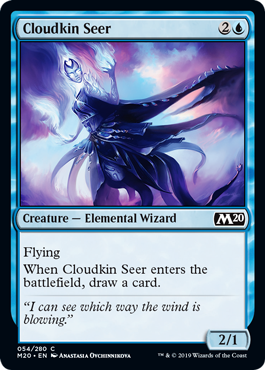
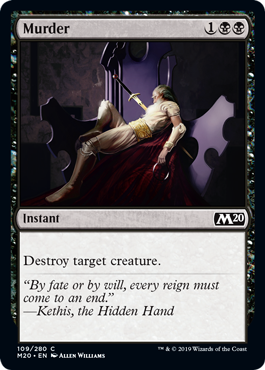
Both Cloudkin Seer and Murder are generally stronger than most common cards we have given you in the past. These cards are exiting in part because of their strength relative to their commonality. We like to power up cards that we identify as fun and interactive. We like strong removal like Murder at common, and Cloudkin Seer is a fun and strong creature that doesn't take over the game singlehandedly. If we lower the power gap between the rare slot and the other rarities, opening packs becomes more exciting.
Booster Draft is a fun way to enjoy Magic and is more fun the more meaningful choices you have. Opening a booster pack and having to decide which card to put in your deck is hard for new players. We can make Booster Draft more inviting by making a few more cards easier to identify as powerful. Magic should be about making interesting decisions, but we felt like it was too nuanced earlier in the draft.
Raising the Floor
In Core Set 2019, there was a chance to get a tapped dual land in the basic land slot. This is also true for M20, but we've changed which cycle of tapped lands and added another land. M20 includes the "gain land" cycle originally debuted in Khans of Tarkir, as well as Evolving Wilds, at the same drop rate as M19.
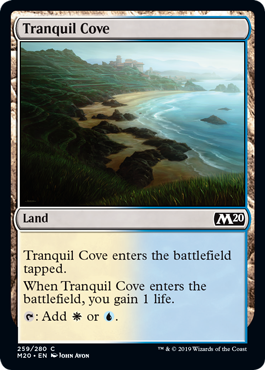
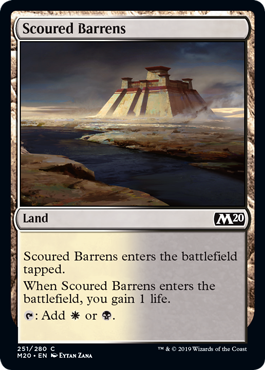
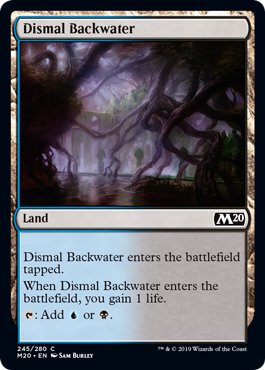
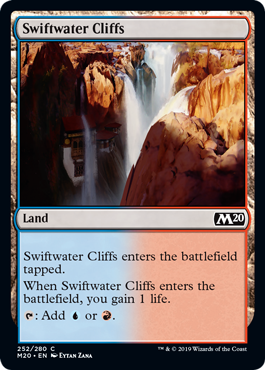
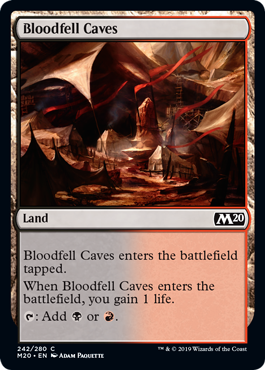

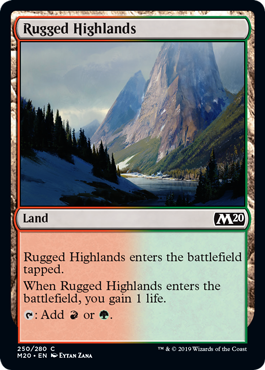
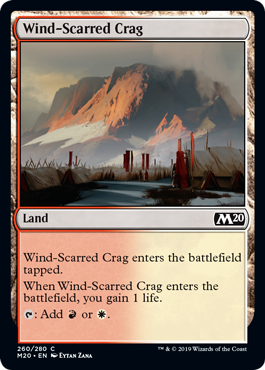
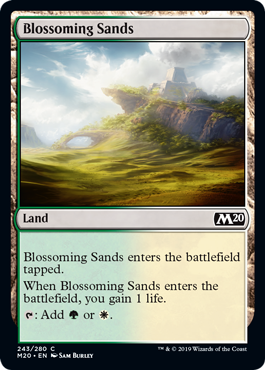
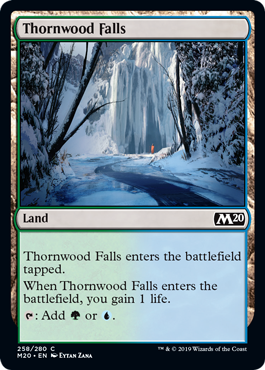
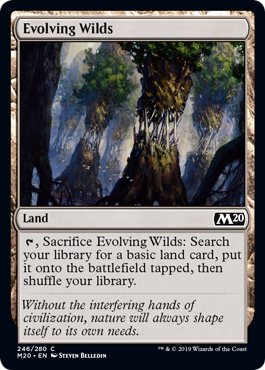
Swapping the set of dual lands available accomplishes a few goals for us. It raises the minimum bar of power level for mana bases in Standard. In top-tier Constructed, it never feels good to have to include a non-upside enters-the-battlefield-tapped land in your deck. These also can lessen the blow for newer players too. It's difficult to collect all the optimal dual lands. With the addition of the "gain lands," playing a land that is only slightly weaker than the optimal mana base hurts less.
Designing to You
Magic R&D has a wide variety of people from different backgrounds who value different ways of having fun with Magic. We all have our pet cards, and every so often some of them sneak all the way through to the final product.
Jorubai Murk Lurker is one of my favorite cards. I've even named my internet alias after it. Through years of playing it, I've developed an affinity for small role players like our friend the Murk Lurker. They're just a defensively stated blue and black creature with early- and late-game relevance. With that in mind, I can happily unveil the last card I'll preview today, Tomebound Lich!

Like the Jorubai Murk Lurker, Tomebound Lich can hold the fort early with solid defensive stats and trade with larger creatures late in the game. Deathtouch and combat-damage-to-opponent triggers are one of my favorite pairings on creatures. Normally, deathtouch makes most sense on smaller creatures, but that incentivizes the player not to attack. By combining the two, you can make more interesting scenarios where you want to attack with your smaller deathtouch creatures.
As a general rule for most sets, the multicolored uncommons are indicative of what the two-color strategy is trying to do. In Core Set 2020, the blue-black archetype is open-ended and Tomebound Lich can be used in all of them. It's also one of the more decision-intensive strategies, which makes it my favorite as a Spike-leaning player.
That's all from me today. I'll be back soon enough to share some of my favorite Future Future League decks from the M20 FFL focus period. In the meantime, I'll be at most West Coast (best coast) Magic events. Come say "Hi!"
—Abro
@Murk_Lurker
